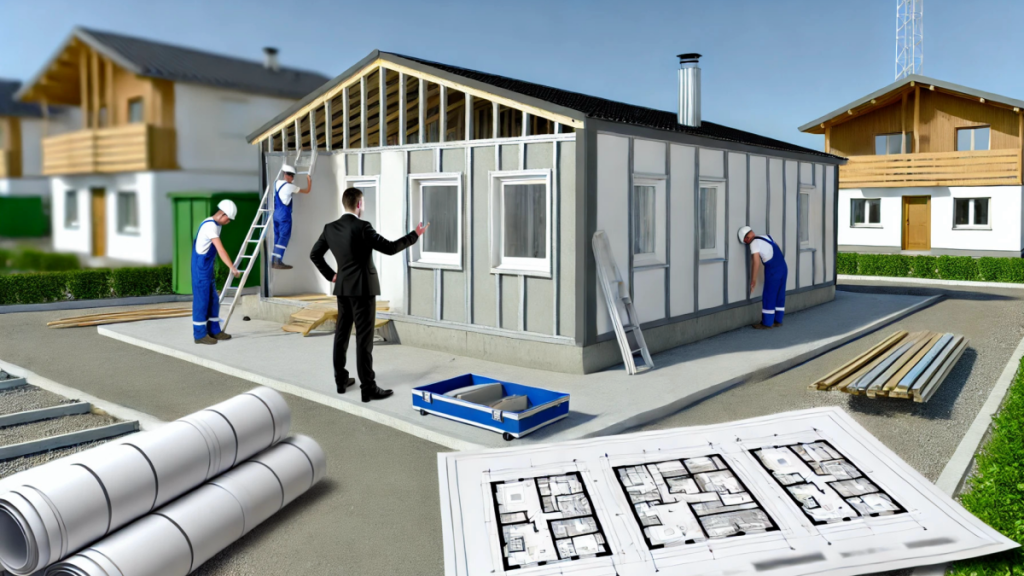Everyone dreams of living in a large flat or house. Unfortunately, our own four corners often mean high purchase costs. The same is true when building a house from scratch. The purchase of a plot of land, the design and then the construction process involve costs, and often not inconsiderable ones.
In recent times, there has been record inflation. Price rises have also affected building materials. Along with this, renovation and construction contractors have also raised their rates. All this has made it even more difficult to build a house cheaply and quickly. In this article, we will try to answer your question on how to build a house cheaply and quickly in UK in 2025. We hope that our guide will help you to build your own, dream, big and beautiful house. We invite you to read it.
Why build a house cheaply and quickly?
The current situation on the construction market in UK, but also globally, requires investors to be highly flexible and thoughtful. The increase in the prices of construction materials, caused by economic crises, shortages of raw materials or breaks in supply chains, significantly affects the total cost of investment implementation. In addition, the extended waiting time for professional construction teams, which is due to both the shortage of skilled workers and the excessive volume of orders in the construction industry, is a problem. As a result, investors are increasingly looking for solutions that allow them to reduce construction time while keeping costs at an acceptable level.
Rising Costs and Extended Timelines
The surge in building material prices is impacting nearly every construction project. From steel and concrete to more advanced structural components, inflation and global raw material shortages are significantly driving up construction costs. Moreover, it’s not just materials that are becoming pricier. Building plot prices have soared in recent years, especially in sought-after locations. This increase in land value is linked to the limited availability of building sites, particularly in large cities and their immediate surroundings. Additionally, long waiting times for construction teams and the high costs of hiring skilled specialists are further straining investors’ budgets.
In practice, this means that more people are moving away from traditional, time-consuming house-building methods in favour of alternative solutions that allow for savings in both time and money. Choosing the right building technologies, designs, and materials is becoming crucial for investors planning construction in 2024 and 2025.
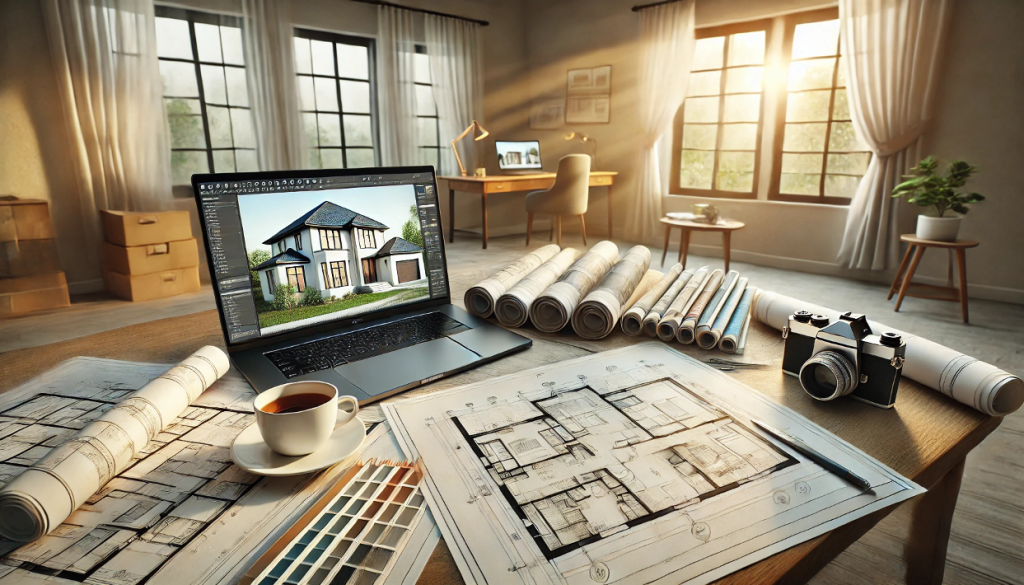
Saving Money and Time
Saving money is one of the most compelling reasons to opt for cheaper and faster house-building methods. Carefully selected technologies and materials can greatly reduce investment costs. For instance, prefabricated or modular homes eliminate the need for lengthy and costly on-site work, as most elements are produced in a factory and simply assembled on-site. This approach shortens the project completion time and reduces expenses associated with hiring specialised construction teams.
Time savings are equally important. With traditional construction methods, building a house can take several years, whereas modern solutions like modular or prefabricated homes allow for completion within a few months. This not only means moving in sooner but also avoiding many indirect costs such as prolonged renting or temporary housing expenses.
A shorter construction period also offers psychological benefits—quicker completion reduces the stress associated with overseeing the work, allows you to start your new life in your new home sooner, and minimises the risk of delays or unforeseen problems that often occur in traditional construction projects.
Why Choose Fast and Affordable Solutions?
Building a house using quick and affordable methods addresses the challenges of today’s market. Minimising costs while maintaining high construction quality is possible thanks to modern technologies like prefabricated, modular, or container homes. These solutions enable rapid house construction without long waits for construction teams or excessive spending on building materials.
Furthermore, opting for these methods ensures a quick transition to a ready-to-live-in home, which is ideal for those who cannot afford lengthy delays. However, building a house cheaply does not mean compromising on quality—the right choice of materials and professionals allows for the construction of a durable and modern home that meets the expectations of even the most demanding investors.
In 2024 and 2025, when further price increases in the construction sector are anticipated, employing affordable and fast-building methods will become even more popular. It’s worth considering these solutions now to save time and money while realising the dream of owning your own home.
You can find more such materials and articles on the website www.cpcs-training-courses.co.uk
What Building Technologies Allow You to Build a House Cheaply and Quickly?
Modern construction offers numerous innovative technologies that enable residential projects to be completed efficiently in terms of both time and cost. With these solutions, we can significantly shorten the construction time and reduce costs without compromising the quality of the structure. Below, we’ll discuss three of the most popular technologies: prefabricated homes, modular homes, and container homes. Each offers different benefits and varies in terms of the construction process and expenses.
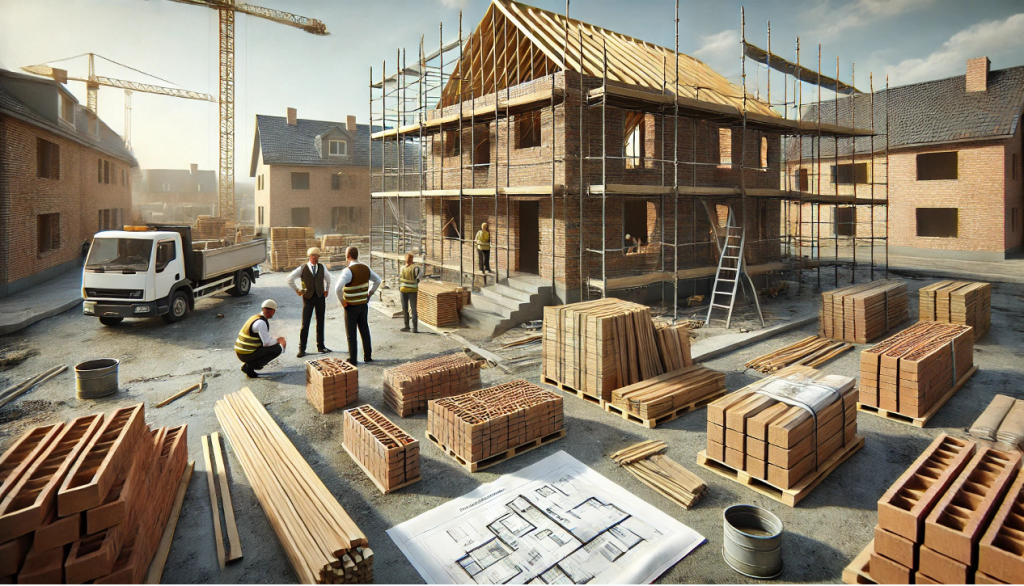
Prefabricated Homes: Modern Technology for Fast Construction
Prefabrication involves producing building elements in a factory, allowing for precise quality control and minimal material waste. Ready-made components like walls, floors, and roofs are then transported to the construction site and assembled on pre-prepared foundations. This method eliminates many time-consuming processes associated with traditional construction, such as wall masonry or pouring floors. Prefabrication enables precise production and assembly even in adverse weather conditions, further accelerating the entire process.
Construction Time: From Order to Moving In
The standard construction time for a prefabricated house ranges from 3 to 6 months, depending on the project’s complexity and location. A significant portion of the work takes place in controlled factory conditions, eliminating delays caused by poor weather. In practice, from the moment of ordering the prefabricated elements to moving in, the house can be ready within a few months, making this technology one of the fastest currently available on the market.
Cost Comparison with Traditional Construction
The costs of building a prefabricated house are significantly lower compared to traditional methods, mainly due to the optimisation of the production process and reduced labour costs. The price of building a prefabricated house can start from around £500 to £700 per square metre. In comparison, constructing a house using traditional methods can cost between £800 and £1,000 per square metre. This difference results from shorter working times for construction teams and more efficient use of materials.
Modular Homes: A Fast and Flexible Building Method
Modular homes are essentially an advancement of prefabrication technology but are characterised by the fact that entire segments (modules) of the house are produced in the factory and then transported to the construction site almost ready-made. Each module can be equipped with electrical installations, plumbing, and finishing elements, which further speeds up the construction process.
What Are the Advantages of This Technology?
The biggest advantage of modular homes is their flexibility—you can build a house of any size and room layout, depending on the number of modules. Another benefit is the speed of on-site assembly. Unlike traditional methods, where construction can take many months, a modular home can be erected in just a few weeks. It’s also worth noting that modular technology allows for easy expansion of the house in the future by adding more modules, which is a significant advantage for those planning gradual expansion.
Example Prices
The cost of building a modular home starts from around £600 to £900 per square metre, depending on the standard of finish and materials used. While this is slightly more than prefabricated homes, modular technology offers much greater design flexibility and the possibility of faster realisation of more complex projects.
Container Homes: A Modern, Ecological, and Affordable Solution
Container homes represent an innovative approach to construction, utilising standard shipping containers as the main structural element. The advantage of this technology is the low consumption of raw materials and short construction time, making it both ecological and economical. Containers are appropriately insulated and adapted for residential purposes, and can be combined in various configurations, allowing for the creation of unique, modern designs.
How Much Does It Cost and How Quickly Can You Erect a Container Home?
The cost of building a container home is relatively low, starting from around £400 to £700 per square metre. The final price depends on the number of containers used in the project and the standard of finish. Thanks to ready-made modules (containers), assembling the house on the construction site takes very little time—usually from a few days to a few weeks. This is an ideal solution for those who need a quick project realisation while also wanting to limit costs.
Modern Construction Technologies
Container homes offer an interesting alternative to traditional building technologies, especially for those who value ecological solutions. Moreover, using recycled containers reduces CO2 emissions and the amount of construction waste, aligning with the trend of sustainable development in construction.
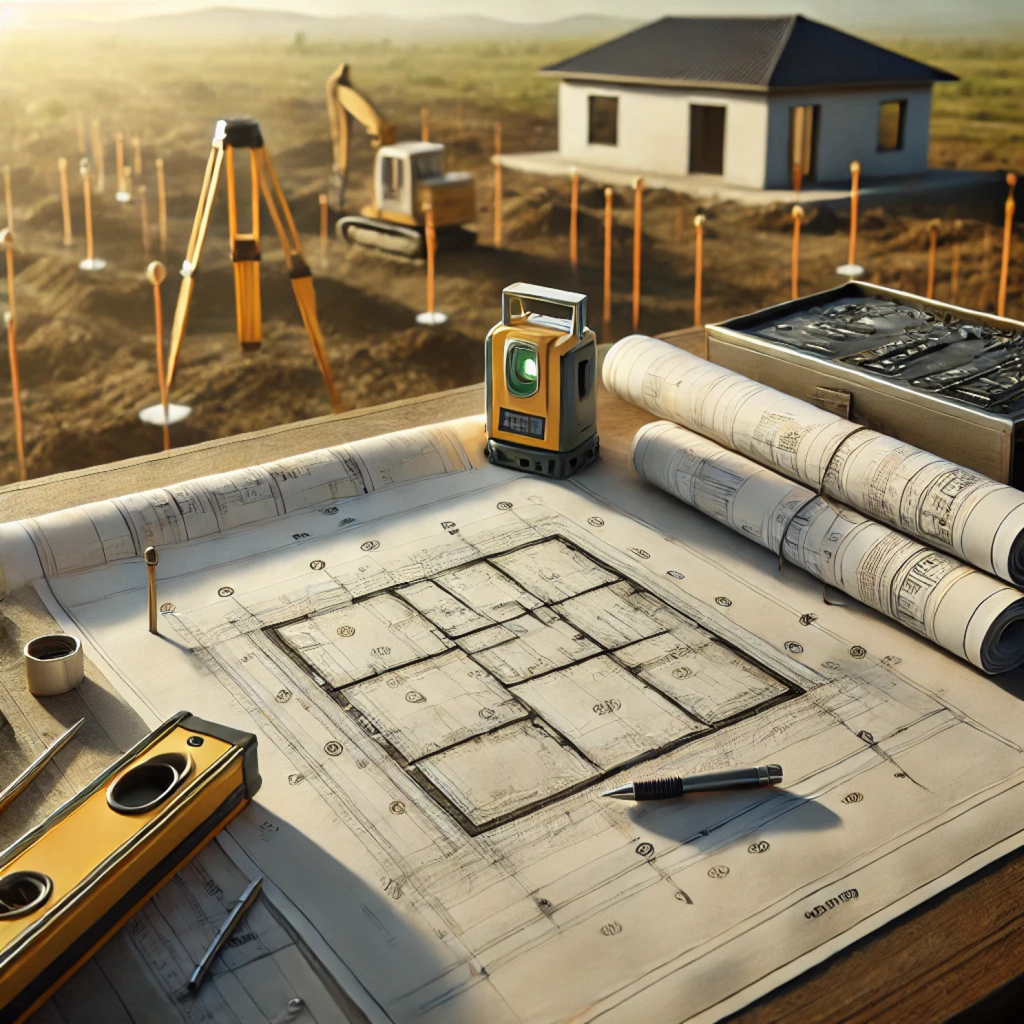
How to Begin Building a House Step by Step
Embarking on the journey of building a house requires a well-thought-out plan, the completion of numerous formalities, and making crucial decisions. While the process may seem daunting, proper organisation and understanding of each stage can significantly simplify the entire investment. Below, we outline the essential steps to correctly start building your home, from selecting a plot to handling the formalities associated with building permits.
Choosing a Plot
The location of your building plot is one of the most critical aspects to consider before commencing construction. A well-chosen location can impact not only your future quality of life but also the overall cost of the investment.
What Should You Know About Location and Formalities?
When selecting a plot, it’s essential to pay attention to several key factors:
- Availability of Utilities: A fully serviced plot (with access to water, electricity, gas, and sewage systems) will be more attractive and cheaper in future operating costs than one that requires utility installations from scratch.
- Neighbourhood and Surroundings: A plot located near other homes may offer better access to infrastructure such as shops, schools, and public transport. However, excessive population density can negatively affect living comfort.
- Local Development Plan (LDP): Before purchasing, check if the location has an LDP, which determines land use and permissible building types. This key document helps avoid issues related to obtaining building permits.
Factors Influencing Plot Price
Several significant factors affect the price of a building plot:
- Location: The closer to the city centre or attractive areas (e.g., forests, lakes), the higher the plot price.
- Size: Larger plots are generally more expensive, although the price per square metre may be lower than smaller parcels.
- Access to Infrastructure: Fully serviced plots with good access roads and public transport will be more costly.
- Terrain and Soil Conditions: A flat plot with suitable soil is easier and cheaper to build on. Plots in wet areas or with significant slopes may require additional financial outlays.
House Designs That Are Cheap to Build
Choosing the right house design is a pivotal moment that can significantly impact the overall cost of the investment. Affordable house designs focus on minimising construction costs by simplifying structures, reducing space, and using economical materials.
Where to Find Ready-Made Designs?
Ready-made house designs can be found in architectural offices specialising in such solutions. Online portals offer a wide range of designs tailored to various needs and budgets. Websites like Archon, Murator Dom, or Extradom provide hundreds of house designs developed with cost optimisation and rapid construction in mind.
Designs Optimising Construction Costs
Affordable house designs typically feature:
- Small Usable Area: The cheapest designs are usually houses ranging from 70 to 100 m². A smaller area means lower construction and operating costs.
- No Basement and Attic: Single-storey houses without a basement and with a simple roof are cheaper to build as they don’t require complex earthworks or additional insulation.
- Simple Shape and Gable Roof: Avoiding complex roof structures and multi-level architectural solutions can significantly reduce material and labour costs.
By adopting such solutions, investors can save on both building materials and labour, which is crucial when building on a limited budget.
Formalities
Before starting house construction, it’s necessary to obtain appropriate permits and meet legal requirements. While this process is complex, it can be optimised to avoid unnecessary delays and costs.
What Should You Know About Building Permits?
A building permit is a document you must obtain to legally commence construction works. To receive it, you need to meet several conditions:
- Submitting a Building Permit Application: This includes attachments such as the construction design and an extract from the local development plan (or a decision on building conditions if the plot lacks an LDP).
- Construction Notification: For simple single-family house projects, it’s possible to replace the building permit with a construction notification, which is faster and less formal. However, this solution has limitations regarding the building’s height and area.
How to Limit Time and Costs Related to Formalities?
To reduce time and costs associated with obtaining permits, consider the following:
- Using Ready-Made House Designs: Catalogue designs are usually vetted for compliance with building regulations, eliminating the need for adaptation and shortening the waiting time for a permit.
- Submitting a Complete Application: Any errors or missing documents prolong the procedure. Investing time in ensuring all documents are correctly prepared can save delays.
- Opting for Construction Notification: For simple house projects, consider a construction notification instead of a building permit, potentially shortening formalities by several weeks.
The Cheapest Building and Finishing Materials
Building a house on a tight budget primarily requires wise selection of building and finishing materials. Appropriate choices not only lower costs but can also speed up the entire implementation process. In this section, we’ll discuss affordable yet durable materials that can significantly reduce construction and finishing expenses. We’ll focus on wood as an economical alternative to traditional materials, discuss commonly used prefabricated materials, and highlight potential savings during interior finishing.
Wood: An Economical Alternative to Traditional Materials
Wood has always been a popular building material due to its properties, availability, and lower price compared to some traditional materials like concrete or steel. A wooden house structure is lighter, allowing for savings on foundations. Additionally, wooden buildings are quick to assemble and easy to adapt to various climatic conditions.
Advantages of Using Wood in House Structures
- Lightweight Construction: Wood is lighter than concrete or brick, resulting in less foundation load and savings during foundation construction.
- Ease of Processing: Wood can be easily cut and adjusted, accelerating the construction process and reducing labour costs.
- Natural Insulation: Wood has good thermal insulation properties, helping to reduce future operating costs by providing a natural thermal barrier.
- Eco-Friendliness: Wood is a renewable material that can be sourced sustainably, aligning with modern ecological considerations.
Disadvantages of Using Wood
- Maintenance: Wood requires regular maintenance to protect against pests, moisture, and fire, potentially increasing long-term maintenance costs.
- Shorter Lifespan: Compared to concrete or steel structures, wood is less durable. While appropriate protections are possible, they require additional investments.
- Fire Risk: Despite modern impregnation methods, wood is combustible, which may affect building insurance costs.
Prefabricated Materials: Brick, Aerated Concrete, SIP Panels
Selecting appropriate building materials can reduce construction costs and shorten project realisation time. Modern prefabrication technologies offer numerous possibilities that can significantly cut expenses. Prefabricated materials are produced in factories and assembled on-site, shortening construction team working time and eliminating many costly work stages.
Brick
Brick is a traditional building material that remains popular due to its aesthetic qualities, durability, and insulating properties. However, brick can be more expensive compared to modern materials like aerated concrete or SIP panels, and the masonry process is time-consuming.
Aerated Concrete
Also known as cellular concrete, aerated concrete is a lightweight and inexpensive building material characterised by excellent thermal insulation and ease of processing. Its low weight allows for savings on foundations, and large concrete blocks enable faster wall erection compared to brick. Additionally, aerated concrete is more environmentally friendly and has good fire resistance.
SIP Panels (Structural Insulated Panels)
SIP panels are a modern technology gaining popularity due to exceptional insulation properties and ease of assembly. The panels consist of an insulating foam core sandwiched between two structural boards. They are lightweight, durable, and offer excellent thermal parameters. While the cost of building a house with SIP panels may be higher than using traditional materials, the savings in operation (reduced energy consumption) are noticeable.
Savings on Interior Finishing
Interior finishing is a construction stage that can significantly impact the final investment cost. Fortunately, there are ways to reduce expenses without compromising on quality and aesthetics.
What Elements Can You Do Yourself?
Undertaking some finishing works yourself can considerably lower construction costs. Examples of tasks you can perform independently include:
- Painting Walls: Applying paint yourself saves on labour costs.
- Laying Laminate Flooring: Laminate panels are easy to install, and manufacturers often provide step-by-step instructions.
- Installing Lighting: Many electrical installations (lights, sockets) can be mounted without an electrician, provided you have basic technical knowledge.
- Mounting Skirting Boards: This is an easy task that can be completed in a few hours.
Affordable Yet Durable Finishing Solutions
Choosing the right finishing materials can significantly affect the overall investment cost. Here are some examples of affordable yet durable interior finishes:
- Ceramic Tiles: The market offers inexpensive tiles with good utility and aesthetic properties. Look for deals in building outlets.
- Laminate Flooring: One of the cheapest flooring solutions, easy to install. Laminate floors are resistant to abrasion and scratches, making them a durable choice.
- Latex Paints: These paints are cheap and durable, offering good moisture resistance and easy cleaning. They can be used in various rooms, from the living room to the kitchen.
- MDF Wall Claddings: MDF boards can be used for finishing walls and ceilings. They are inexpensive yet aesthetic, offering wide arrangement possibilities.
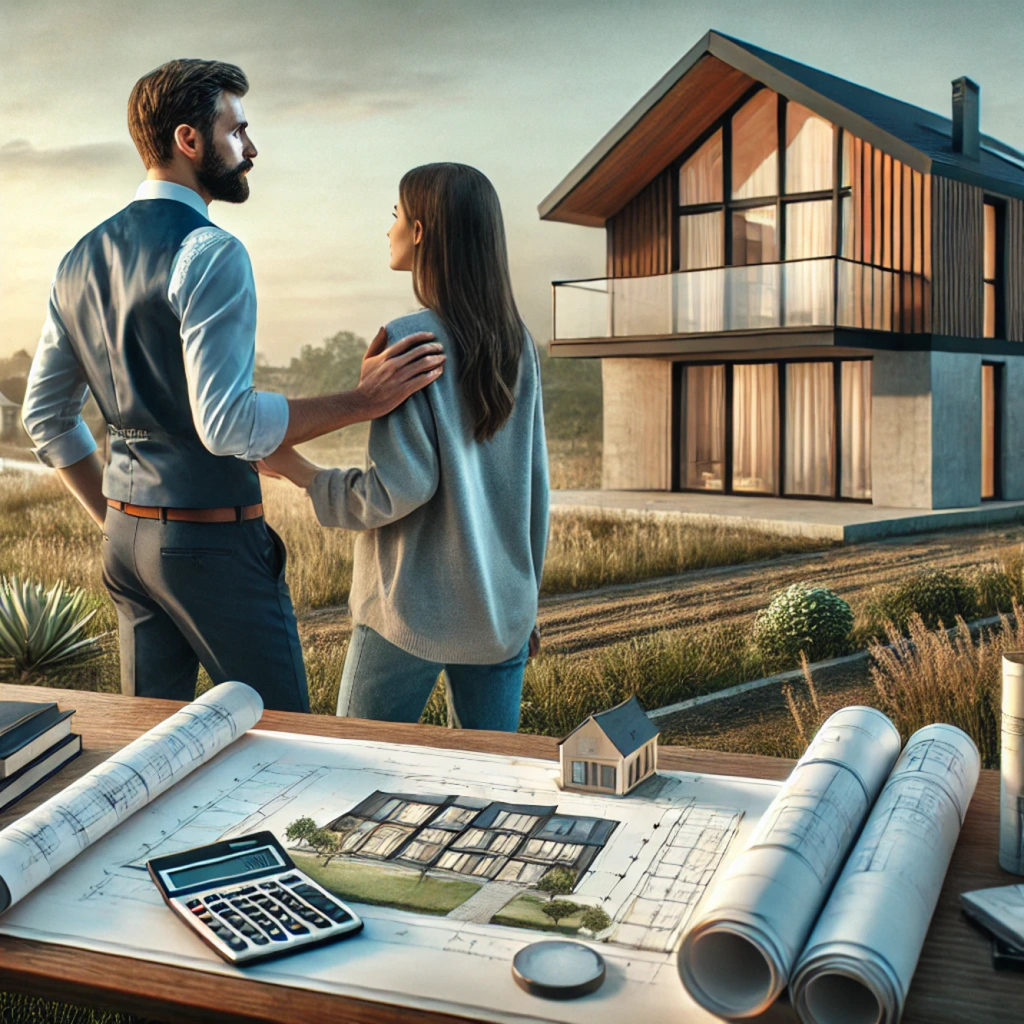
How to Find a Cheap and Reliable Construction Team
Finding a reliable construction team offering services at reasonable prices is a crucial element of any construction project. Choosing the right professionals can impact execution quality, implementation time, and the final investment cost. Therefore, the process of searching for a contractor requires special attention and diligence.
Searching for Contractors
The first step is to find proven construction teams with experience and positive client feedback. There are several places to look for recommendations and verified contractors:
- Industry Portals and Internet Forums: Websites like Oferteo, Fixly, or construction-dedicated portals offer customer ratings and opinions about construction teams. Pay attention to the number of positive reviews and the quality of completed projects.
- Recommendations from Friends and Family: This is often one of the most reliable information sources. People who have had direct contact with a team can share their experiences, helping you avoid working with unreliable professionals.
- Construction Fairs: Attending industry fairs allows direct contact with contractors and establishing cooperation with companies showcasing their services. This offers the opportunity to ask questions directly and compare offers.
- Local Construction Companies: Consider companies operating near the construction site. Local enterprises often offer more competitive prices, minimising travel and logistics costs.
Comparing Service Prices
Comparing service prices is a necessary step to avoid overpaying for the same construction works. Collect offers from various teams to get a full market picture and find the most advantageous solutions. When analysing offers, pay attention to several aspects:
- Scope of Work: It’s important to specify exactly what’s included in the price to compare offers reliably. Some teams may hide certain costs like building materials, travel, or additional works, affecting the final amount.
- Labour Rates: Labour rates may vary depending on the region. In large cities, construction service prices are usually higher than in rural areas. Consider collaborating with a team from outside major cities to reduce labour costs.
- References and Guarantees: Regardless of price, choose a team that offers guarantees on their work. Lower rates may sometimes mean lower quality, so check if contractors provide a warranty and what references they have from previous clients.
Cost Optimisation
Not every task on the construction site requires hiring specialists. Optimising construction costs involves deciding which tasks you can do yourself and which should be left to professionals.
When Is It Worth Hiring a Specialist?
Hiring a specialist is essential for works requiring licences and specialised knowledge, such as:
- Electrical and Plumbing Installations: Incorrect execution can lead to serious problems, including fire hazards or building flooding.
- Structure and Foundation Works: These construction elements are crucial for the house’s stability and durability, so they should be entrusted to experienced professionals.
- Window and Door Installation: Proper installation ensures thermal and acoustic insulation and protects against moisture.
What Can You Do Yourself?
Many finishing and preparatory works can be done independently, significantly reducing house construction costs. Here are some examples:
- Painting Walls and Ceilings: Painting doesn’t require specialist skills and saves on labour costs.
- Laying Laminate Flooring: Many laminate floors on the market offer a simple click system, enabling self-installation.
- Landscaping Around the House: Gardening tasks like preparing the lawn, planting plants, or laying paths can be successfully done yourself, minimising expenses on a gardening team.
Avoiding Pitfalls in Budget-Friendly House Construction
Constructing a home economically requires careful attention to avert pitfalls that could significantly escalate your investment costs. Poor decision-making, inadequate planning, or overlooking crucial details can lead to unexpected expenses and delays.
Hidden Expenses: How to Steer Clear of Overspending
When planning your home build, it’s essential to be mindful of concealed costs that can heavily impact your budget:
- Utility Connection Fees: Many investors underestimate the additional expenses for connecting utilities such as electricity, water, and gas, which can increase construction costs by several thousand pounds.
- Permits and Approvals: Delays in obtaining building permissions can cause project standstills, and extended timelines mean higher costs—keeping construction crews on-site longer will inflate your expenses.
- Unanticipated Repairs and Adjustments: Choosing low-quality materials or having inaccuracies in your plans may necessitate costly repairs and modifications, driving up the overall cost of your build.
Optimising Time and Money: Accelerating Construction Without Compromising Quality
Time efficiency translates to financial savings. The longer the construction period, the higher the expenses for labour, equipment hire, and potential site fees. Here are ways to optimise your construction timeline:
- Choose Pre-Designed Plans: Ready-made house designs are pre-approved and can significantly speed up the initiation of your project.
- Implement Prefabrication: Using prefabricated elements like SIP panels or ready-made wall sections reduces on-site assembly time, minimising tasks that require lengthy preparation.
- Effective Coordination of Work: Hiring a competent project manager can ensure that all tasks proceed smoothly and on schedule, preventing unnecessary delays.
Key Points to Consider for Efficient and Economical Construction
- Select a Trustworthy Construction Team: A lower quote doesn’t always mean better value. It’s crucial to check references and compare multiple bids to find a reliable team.
- DIY Where Possible: Undertaking some tasks yourself can reduce costs, but be realistic about your skills and the time you can dedicate.
- Anticipate Hidden Costs: Always prepare a detailed budget that accounts for all potential expenses, including utility connections, permits, and possible revisions.
- Adopt Prefabrication Methods: Prefabrication is one of the most effective ways to shorten construction time and cut costs without sacrificing quality.
By adhering to these recommendations, you can successfully complete your house-building project in a cost-effective and timely manner, ensuring a high-quality build and personal satisfaction with the end result.
Summary – How to build a house cheaply and quickly?
By applying the tips from our article you will certainly be able to build your dream home quite cheaply. Of course, there are many factors and variables that will always affect the cost and final price of construction. It is worth paying attention to the choice of materials and the renovation and construction team. The purchase of a suitable plot of land may also be an issue on which you will be able to reduce your investment budget somewhat. However, we discourage you from buying low-quality and cheapest materials, which, unfortunately, may significantly worsen the finish and durability. We hope that all these tips have given you an answer to the question of how to build a house cheaply and quickly.




